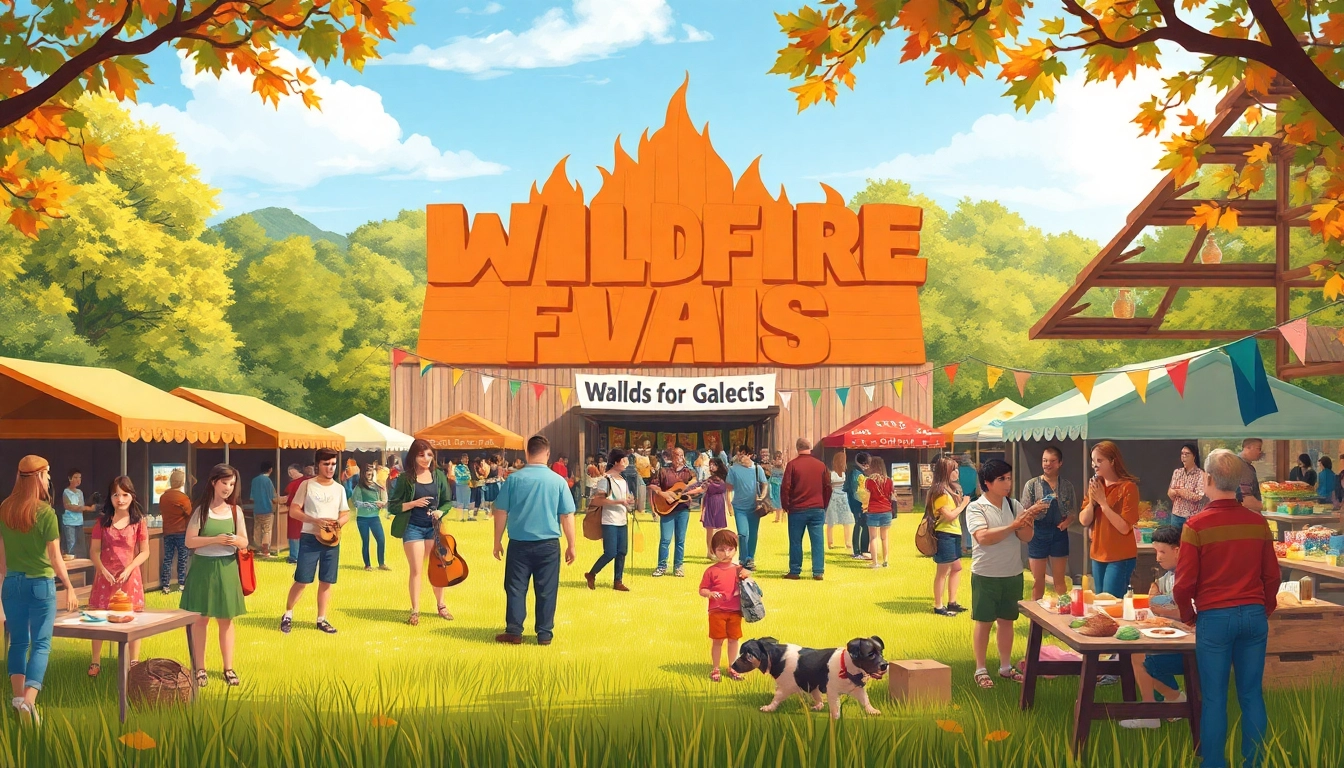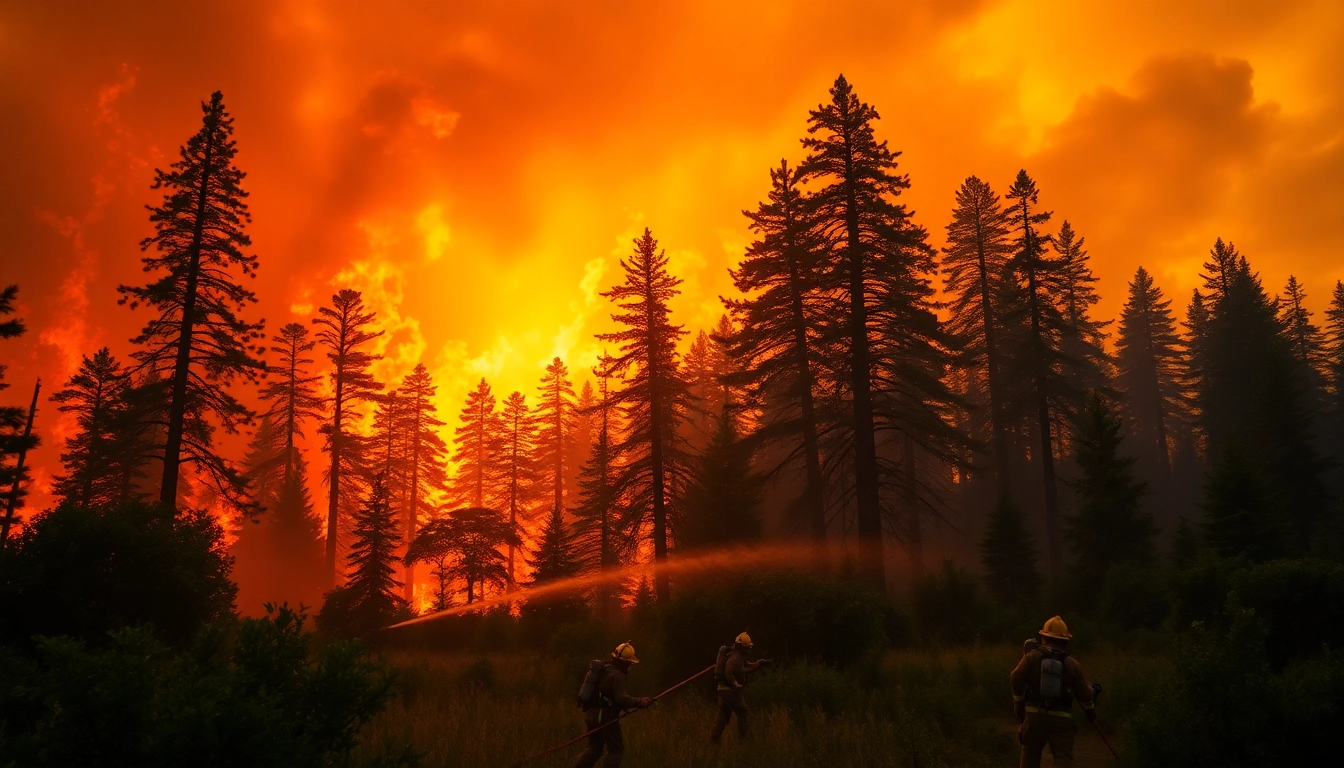Understanding Wildfire Events
Wildfires can have catastrophic effects on communities, ecosystems, and economies. Yet, amid the destruction, they also serve as a profound reminder of resilience and recovery. Understanding wildfire events encompasses recognizing not just the fires themselves, but also the collective community response, the role natural disasters play, and the educational potential of such situations. By dissecting the various facets of wildfire events, we can glean insights and learn to build stronger, more resilient communities in their aftermath.
What Constitutes a Wildfire Event?
A wildfire event is not merely the occurrence of a fire; it represents a series of happenings interconnected within a specific timeframe and location. These events are marked by their rapid spread, fueled by natural factors such as dry conditions, wind, and combustible materials. However, factors such as human activity, climate change, and land management practices also significantly contribute to the initiation and spread of wildfires.
A wildfire event can be defined by several stages:
- Ignition: This is the point where a fire starts, whether through natural causes like lightning or human activities such as campfires or discarded cigarettes.
- Spread: Once ignited, fires can spread rapidly based on available fuel, wind patterns, and topography. This phase is often the most destructive.
- Suppression: This includes firefighting efforts aimed at controlling the fire to protect lives, property, and ecosystems. Firefighting can also incorporate preventive measures such as controlled burns.
- Recovery: This phase involves the community’s return to normalcy post-event, including rebuilding efforts, recovery programs, and ecological restoration.
The Role of Community in Wildfire Events
Communities play a pivotal role in both the prevention and management of wildfire events. Community engagement enhances fire preparedness and response strategies. Effective communication and collaboration among community members, local authorities, and fire management agencies are essential. Moreover, promoting a culture of fire-safe practices, such as creating defensible space around homes and encouraging responsible behavior with fire, significantly mitigates wildfire risks.
Community-driven initiatives—like local volunteer firefighting groups or educational programs on fire prevention—also empower individuals to act during threats. Moreover, recovery processes can pivot on community resilience, with shared resources and support systems aiding recovery efforts. Engaging community members in recovery can foster a sense of solidarity, crucial for collective healing.
The Impact of Natural Disasters on Events
Natural disasters, including wildfires, can have profound impacts on various types of events ranging from community gatherings to cultural celebrations. The unpredictability of fire season can lead to cancellations or modifications of planned activities, thus forcing communities to adapt and alter their traditionally scheduled events. For instance, outdoor festivals may be relocated, transformed into online events, or postponed for safety considerations.
The aftermath of a wildfire often brings the community together, sparking initiatives that emphasize recovery and resilience, such as fundraising events or educational workshops on fire safety and ecology. These events also form a crucial part of the healing process, allowing communities to share their stories, remember losses, and rebuild their future.
Types of Wildfire Events
Understanding the types of wildfire events helps in effective planning and engagement during wildfire season. Different formats of events can address various community needs and directly contribute to wildfire preparedness and recovery.
Educational Workshops and Their Importance
Educational workshops provide valuable training about fire safety, preparedness, and community response during wildfire events. These sessions often cover topics such as:
- Fire ecology: Understanding how wildfires affect the ecosystem and the importance of fire in certain habitats.
- Preparation and planning: Strategies for personal and community preparedness, including creating evacuation plans and fire-safe zones.
- Aftercare and restoration: Teaching communities about the recovery process post-wildfire and ways to support the recovery of both human and ecological systems.
Empowering individuals with educational resources reinforces community resilience and enhances collective action during wildfire events. Such workshops can be conducted in collaboration with local fire departments, environmental organizations, and educational institutions.
Cultural Celebrations Related to Nature
Culture plays a significant role in how communities perceive and respond to wildfire threats. Cultural celebrations can incorporate themes of nature, environmental stewardship, and resilience against wildfires. Events like Earth Day, community fairs, and local festivals can be adapted to include educational components about fire management and resilience. These celebrations create a unique opportunity for community members to build connections while learning about fire awareness and sustainability.
Outdoor Concerts and Recreational Gatherings
Outdoor concerts and recreational gatherings significantly contribute to community spirit, especially after wildfire events. However, the planning of these events in fire-prone areas must consider safety precautions. Utilizing fire-safe venues, monitoring fire weather conditions, and having emergency response plans in place are crucial. These gatherings can also serve as fundraisers to support fire victims and recovery efforts, merging enjoyment with community support.
How to Organize a Wildfire Event
When planning a wildfire event, whether for education, community engagement, or fundraising, meticulous organization is key to its success. The following steps outline how to effectively organize such events:
Gathering the Right Resources
Successful events require various resources, including materials, venue space, and facilitators. Consider the following:
- Location: Choose a venue accessible to the community and considerate of wildfire risks, ensuring it offers necessary equipment and safety measures.
- Funding: Identify sources of funding, such as local businesses, fundraising, grants, and sponsorships, to support the event.
- Materials: Gather educational materials, promotional items, and any specific items needed for activities or presentations.
Assembling a Team of Volunteers
A well-organized team can significantly enhance the efficiency and success of the event. Recruit volunteers from within the community or partner with local organizations. Assign specific roles based on individual strengths, such as:
- Event coordination
- Logistics management
- Marketing and communication
- On-the-ground support during the event
Prevent burnout by ensuring regular communication and engagement, acknowledging volunteers’ efforts throughout the planning process.
Marketing Your Wildfire Event
Effective marketing strategies are essential to attract participants and ensure the success of your wildfire event. Utilize a mix of online and offline marketing techniques, such as:
- Social media: Use platforms like Facebook, Instagram, and Twitter to promote the event and engage with the community.
- Local media: Seek coverage in local newspapers, radio stations, and community bulletins to broaden reach.
- Flyers and posters: Distribute visually appealing materials within community centers, libraries, schools, and local businesses.
- Networking: Collaborate with local organizations to leverage their platforms and networks for event promotion.
Case Studies of Successful Wildfire Events
Examining successful wildfire events provides valuable insights into effective strategies and community engagement. Here, we highlight notable case studies that exemplify best practices.
Highlighting Innovative Approaches
One successful initiative is the “Firewise Communities Program”, which focuses on education and proactive measures to mitigate wildfire risks. This grassroots program encourages residents to implement fire-resistant landscapes, thus decreasing the likelihood of fire spread. Events organized under this program showcase best practices and include hands-on workshops that empower residents to take better care of their properties, all while engaging with their neighbors.
Community Engagement Strategies
Events like “Community Conversations about Fire” facilitate open dialogues between fire management professionals and community members. These events foster trust, improve communication, and encourage community involvement. Facilitators present vital information on wildfire management, and attendees can voice concerns, thus creating a two-way avenue for information exchange.
Lessons Learned from Past Events
Analyzing past events, such as evacuation drills and recovery fairs, reveals common threads of success and areas needing improvement. Key lessons include adjusting event formats to better suit community needs, ensuring timely communication, and having clear safety protocols in place. Furthermore, integrating survivor stories fosters empathy, allowing communities to learn from shared experiences while reinforcing collective resilience.
Measuring the Success of Wildfire Events
Evaluating the success of wildfire events allows organizers to reflect on achievements and identify opportunities for future improvements. Various metrics provide insights into the impact and effectiveness of these events.
Establishing Key Performance Indicators
Identifying and implementing Key Performance Indicators (KPIs) is essential for post-event evaluation. Common KPIs for wildfire events may include:
- Attendance numbers compared to previous events
- Participant feedback and satisfaction surveys
- Engagement levels on social media platforms and local media coverage
- Funds raised for recovery efforts or educational programs
Feedback and Community Responses
Post-event surveys and open discussions with community members provide qualitative feedback on the effectiveness of the event and highlight areas needing improvement. Encouraging constructive feedback allows event planners to adjust future events accordingly.
Future Trends in Wildfire Events
As climate change biases lead to more extreme weather patterns and wildfire occurrences, future wildfire events may increasingly focus on sustainability and adaptation. Engaging experts in climate science, ecology, and fire management will play a vital role in shaping the narrative around wildfire events, ensuring that communities are prepared for future challenges. Additionally, leveraging technology, such as virtual events and interactive educational tools, can further enhance community engagement and awareness.



